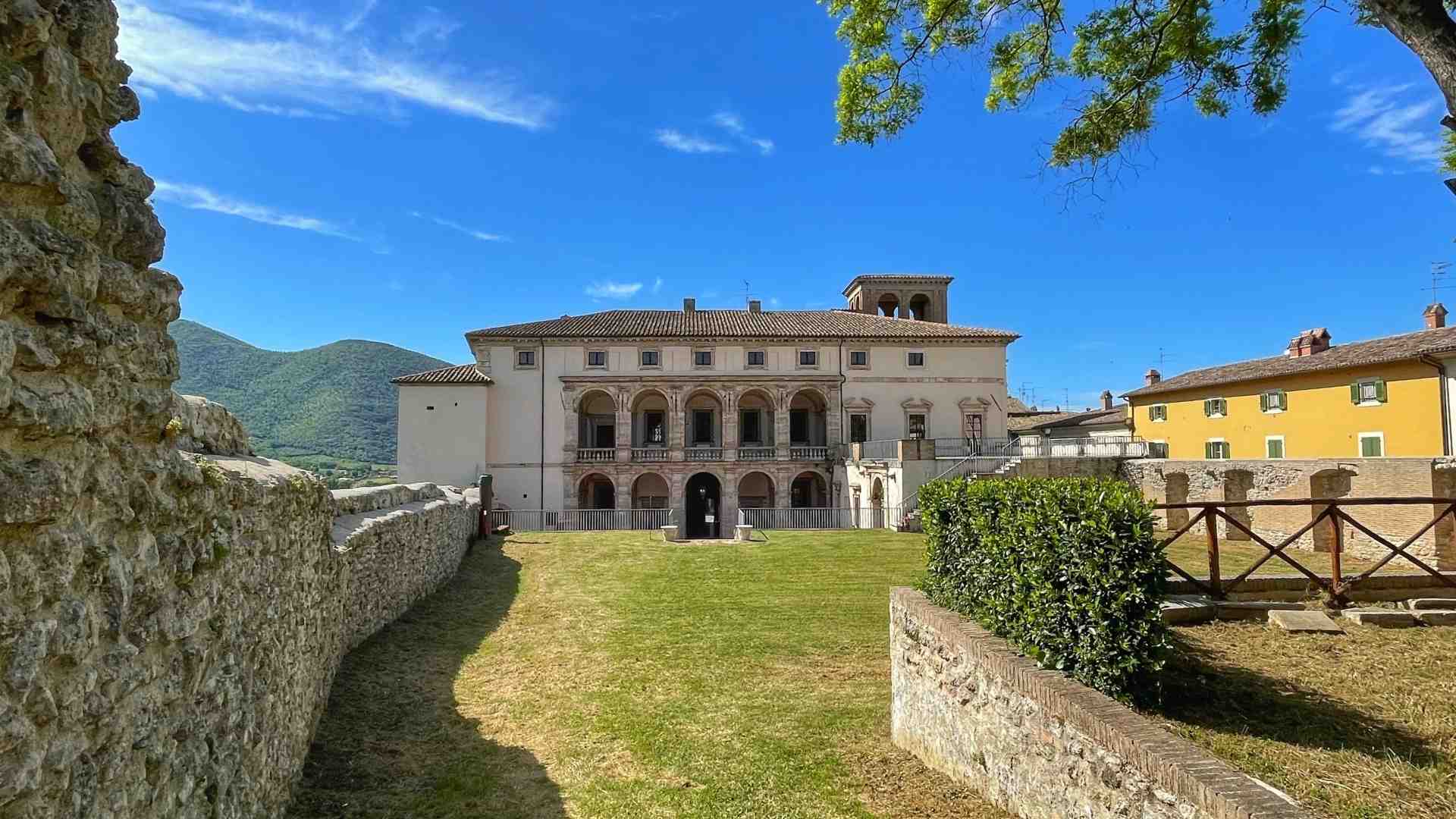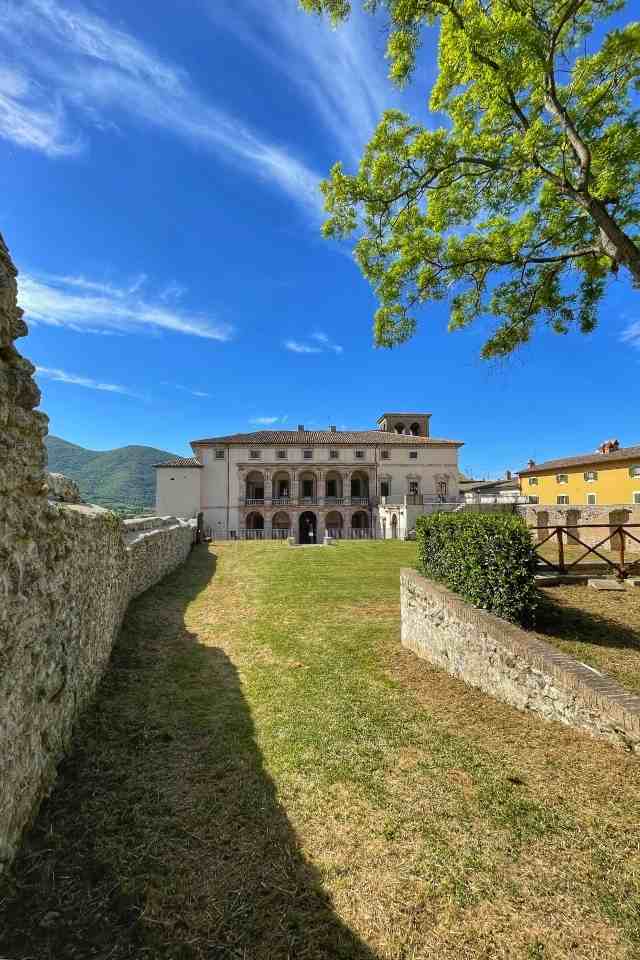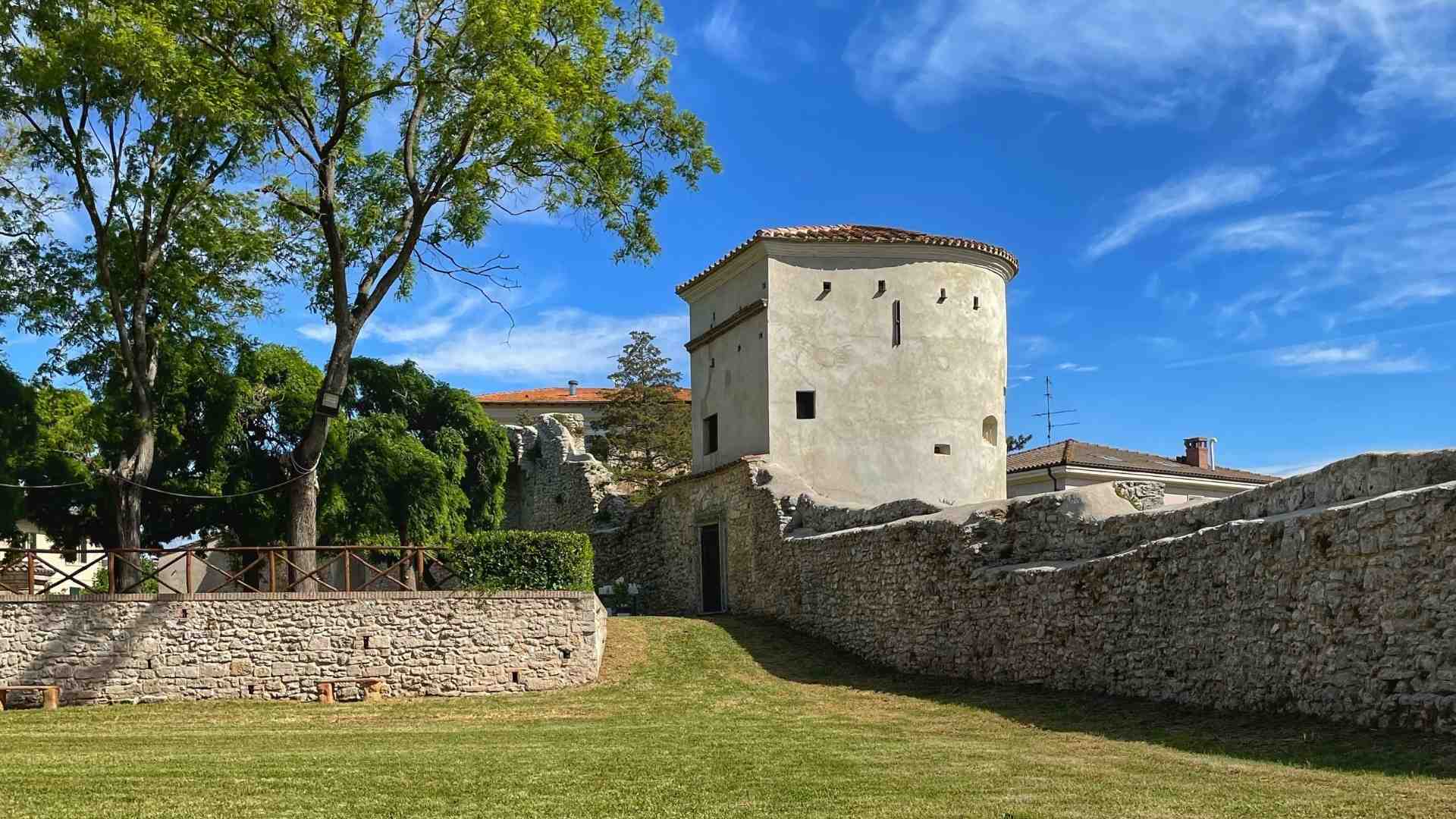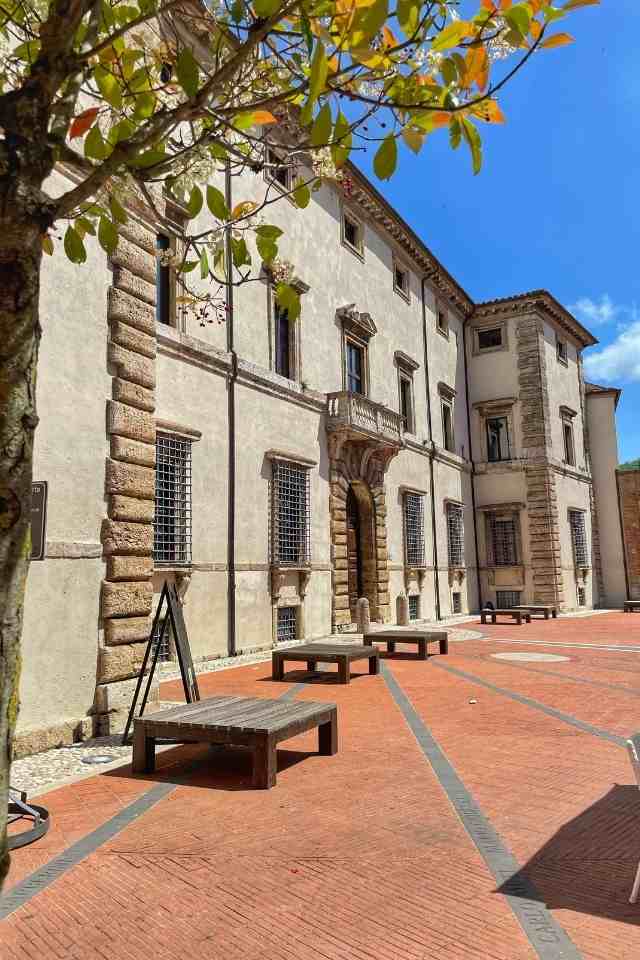punto di interesse
Cesi Palace
Palazzo storico
351 703 1853
monday: closed
tuesday: closed
wednesday: 11–13, 15:30–18:30
thursday: 11–13, 15:30–18:30
friday: 11–13, 15:30–18:30
saturday: 11–13, 15:30–18:30
sunday: 11–13, 15:30–18:30

punto di interesse
monday: closed
tuesday: closed
wednesday: 11–13, 15:30–18:30
thursday: 11–13, 15:30–18:30
friday: 11–13, 15:30–18:30
saturday: 11–13, 15:30–18:30
sunday: 11–13, 15:30–18:30
point of interest
monday: closed
tuesday: closed
wednesday: 11–13, 15:30–18:30
thursday: 11–13, 15:30–18:30
friday: 11–13, 15:30–18:30
saturday: 11–13, 15:30–18:30
sunday: 11–13, 15:30–18:30


Facing the homonymous square of Acquasparta, there is one of the most important buildings of the Renaissance (follow the link for more information).
𝗖𝗲𝘀𝗶 𝗣𝗮𝗹𝗮𝗰𝗲 𝗼𝗳 𝗔𝗰𝗾𝘂𝗮𝘀𝗽𝗮𝗿𝘁𝗮, was the residence of prince Federico II, and became, in 1609, the headquarters of Lincei’s Academy, hosting even the physician and philosophum of nature Galileo Galilei.
Renaissance building, today symbol of the proud of the all of the community of Acquasparta, Cesi Palace, was build on the ruins of the ancient fortress, destroyed during the war with Todi, in the 1501, by the project of Giovan Domenico Bianchi, who were entrusted with the work following the architect Guido Guidetti in 1564.
Was finished only in the 1579, year of the wedding of Federico II, il Linceo, son of Angelo Cesi and Beatrice Caetani, grandson of Gian Giacomo e Isabella d’Alviano, with Olimpia Orsini.
Since then, the palace became the residence of one of the most important families of the area, umbro-roman.
In the XVII century, was completed even the square, now Federico Cesi Square, with the edification of a brick porch that rests directly on the walls of the castle.

Facing the homonymous square of Acquasparta, there is one of the most important buildings of the Renaissance (follow the link for more information).
𝗖𝗲𝘀𝗶 𝗣𝗮𝗹𝗮𝗰𝗲 𝗼𝗳 𝗔𝗰𝗾𝘂𝗮𝘀𝗽𝗮𝗿𝘁𝗮, was the residence of prince Federico II, and became, in 1609, the headquarters of Lincei’s Academy, hosting even the physician and philosophum of nature Galileo Galilei.
Renaissance building, today symbol of the proud of the all of the community of Acquasparta, Cesi Palace, was build on the ruins of the ancient fortress, destroyed during the war with Todi, in the 1501, by the project of Giovan Domenico Bianchi, who were entrusted with the work following the architect Guido Guidetti in 1564.
Was finished only in the 1579, year of the wedding of Federico II, il Linceo, son of Angelo Cesi and Beatrice Caetani, grandson of Gian Giacomo e Isabella d’Alviano, with Olimpia Orsini.
Since then, the palace became the residence of one of the most important families of the area, umbro-roman.
In the XVII century, was completed even the square, now Federico Cesi Square, with the edification of a brick porch that rests directly on the walls of the castle.

The magnificent facade of the palace, looking the square, is divided in two orders, with a majestic wood door, created with an ancient technique in the center and, above that, a balcony.
Inside, after a long entrance hall, there is a garden crowned by a two-storey portico, headquarter of botanical garden and a little tower where Federico used to look for loneliness.
The ground floor is rich of colorful frescoes , created by Giovan Battista Lombardelli, recently restored with the help of CARIT foundation, who tells the life of Cesi’ family through allegory of the classics in the work of Ovidio metamorphosis.
Through a staircase and a terrace, where there are the coats of arms of different noble families, you access the noble floor that holds the Throne Room.
On top of this room, there is a beautiful coffered ceiling with carved the figures of hercules, trophies of arms and masks, and the coat of arms of the Cesi. In the deep, the big fireplace where Galileo and Il Linceo used to pass the April’s evenings of 1624.
The rooms of the noble floor are rich with frescoes that celebrate the illustrious origin of Cesi’s family, told through the Lives of Plutarco.
Inside the palace there are some artifacts from one of the Cesi’s properties: the present Archeological area of Carsulae.
In the entrance hall is conserved a roman sarcophagus. Interesting is the epigraphe dedicated to Gens Furia conserved in one of the walls of the rooms of the ground floor: probably the rest of a round mausoleum place outside of the Arc of San Damiano.
In one room, on the ground floor, there are a series of rest, from the Roman municipium place along the Flaminia Road.
From 2019, to enrich the Palace rooms, there is the Experiential and Emotional center, dedicate to the first Lincei Academy, with the idea of recreate a journey where the visitator can lives the historical atmosphere related to the period of the foundation of the Academy through projections, holographic and vision in virtual reality.

The magnificent facade of the palace, looking the square, is divided in two orders, with a majestic wood door, created with an ancient technique in the center and, above that, a balcony.
Inside, after a long entrance hall, there is a garden crowned by a two-storey portico, headquarter of botanical garden and a little tower where Federico used to look for loneliness.
The ground floor is rich of colorful frescoes , created by Giovan Battista Lombardelli, recently restored with the help of CARIT foundation, who tells the life of Cesi’ family through allegory of the classics in the work of Ovidio metamorphosis.
Through a staircase and a terrace, where there are the coats of arms of different noble families, you access the noble floor that holds the Throne Room.
On top of this room, there is a beautiful coffered ceiling with carved the figures of hercules, trophies of arms and masks, and the coat of arms of the Cesi. In the deep, the big fireplace where Galileo and Il Linceo used to pass the April’s evenings of 1624.
The rooms of the noble floor are rich with frescoes that celebrate the illustrious origin of Cesi’s family, told through the Lives of Plutarco.
Inside the palace there are some artifacts from one of the Cesi’s properties: the present Archeological area of Carsulae.
In the entrance hall is conserved a roman sarcophagus. Interesting is the epigraphe dedicated to Gens Furia conserved in one of the walls of the rooms of the ground floor: probably the rest of a round mausoleum place outside of the Arc of San Damiano.
In one room, on the ground floor, there are a series of rest, from the Roman municipium place along the Flaminia Road.
From 2019, to enrich the Palace rooms, there is the Experiential and Emotional center, dedicate to the first Lincei Academy, with the idea of recreate a journey where the visitator can lives the historical atmosphere related to the period of the foundation of the Academy through projections, holographic and vision in virtual reality.

The Lincei Academy, the most ancient scientific institution of the world, was founded by Federico II Cesi, in August 17, 1603 whit his friends: Anastasio de Filis, Francesco Stelkuti and Joannes Van Heeck.
The name was choose for the incredible acuity of the view of the lynx and the slogan “sagacius ista”, a spur on academics to be more acute of that.
The argues with the father Federico I, constrained il Linceo to transfer the studies to the Acquasparta’s Palace in 1609 and after two years, the Academy welcomed Galileo Galilei.
Here, at the Palace, was experimented, and then used, for the work “Apiarium-Melissographia”, the microscope, called in the past “occhialino”.
discover all the points of interest of the village
Information, appointments and travel proposals on:
The Progressive Web App is part of the project “Le Terre dei Borghi Verdi”, realized in collaboration and with the contribution of Regione Umbria – Assessorato al Turismo
©2021 Le Terre dei Borghi Verdi
Le Terre dei Borghi Verdi
Welcome in Southern Umbria,
where the slowness becomes value
Information, appointments and travel proposals on:
The Progressive Web App is part of the project “Le Terre dei Borghi Verdi”, realized in collaboration and with the contribution of Regione Umbria – Assessorato al Turismo
©2021 Le Terre dei Borghi Verdi